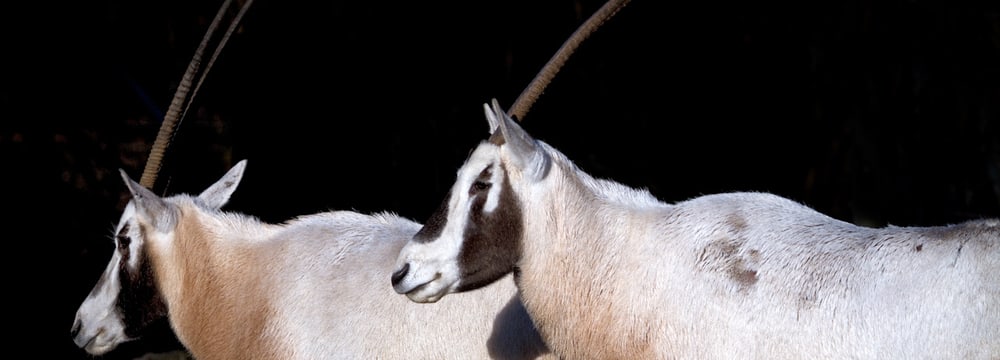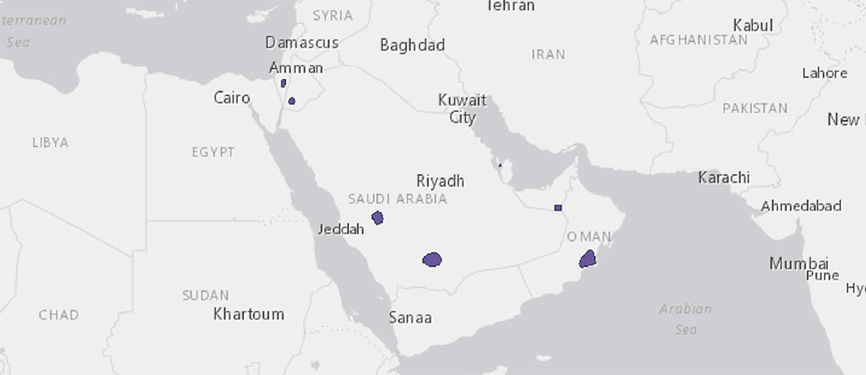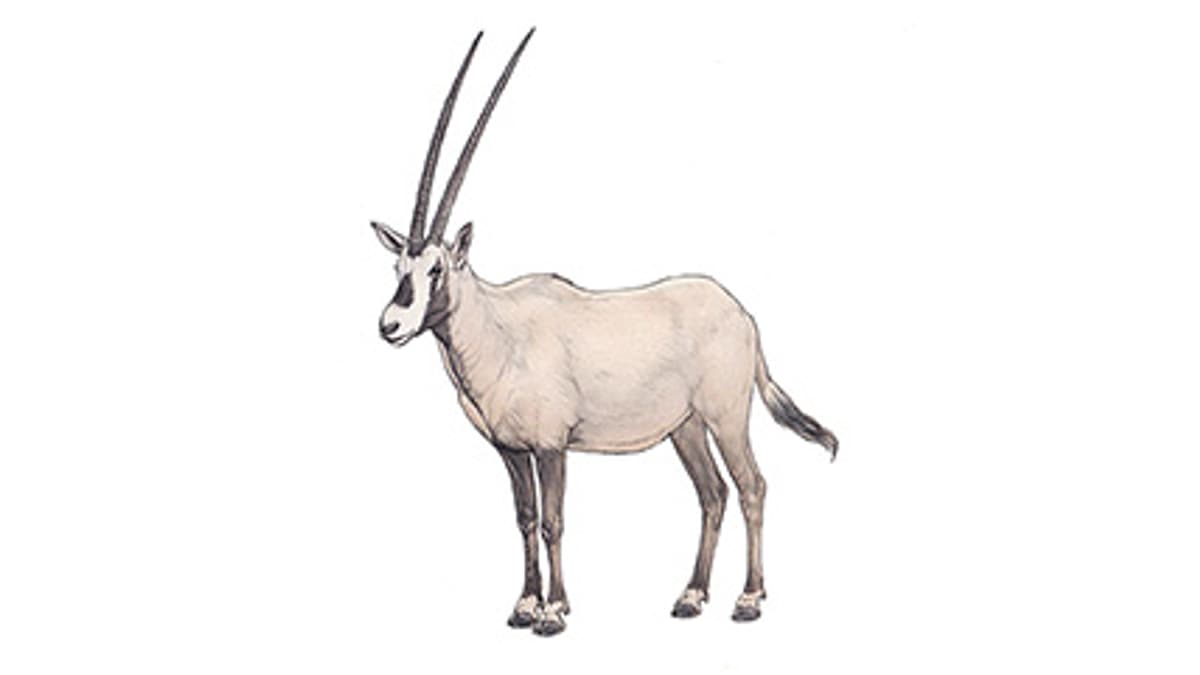
Arabian oryx
Oryx leucoryx
The Arabian oryx is perfectly adapted to life in dry areas. The light color of its fur reflects the sun's rays and thus protects it from the heat. Without suffering any harm, the animals can raise their body temperature to 46.5 degrees Celsius in high heat and lower it to as low as 36 degrees during cool nights. To reduce fluid loss, their feces are very dry and urine is very concentrated. When dew forms on the animals' fur during the cool desert nights, the animals lick the water off and get some of the drinking water they need. The Arabian oryx was on the verge of extinction. In 1960, the population was estimated at about 200 animals. In 1972 the last animal was poached in Oman. Two years earlier, the U.S. zoos of Phoenix and Los Angeles started a breeding program. Only nine animals were available for this purpose. However, the breeding was successful and so single animals could be brought to Europe in 1979. The Berlin-Friedrichsfelde Zoo (then in the GDR), Zoo Antwerp and Zoo Zurich were the first to receive Arabian Oryx from the USA. Zoo Zurich received a total of six animals, which formed the basis of a successful breeding program. From 1982, the first animals born in zoos could be released into the wild. Arabian oryx bred at Zoo Zurich reached Jordan and Saudi Arabia in 1993. Nowadays the population is estimated at over 8000 animals. This conservation success is thanks to some far-sighted zoo directors.
| Taxonomy | Even-toed ungulates, ruminants, bovids, grazing antelopes, oryxes (6 species) |
| Habitat | semi-deserts and deserts |
| Activity pattern | diurnal, migrates in areas with fresh vegetation |
| Social structure | mixed-sex herds with up to 10 animals, rarely in herds with up to 100 animals, bucks temporarily on the move as loners |
| Diet | grasses, herbs, ground crops |
| Weight | 60 to 80 kg, newborns 6 kg |
| Shoulder height | 80 to 100 cm |
| Horns | both sexes, 50 to 75 cm long |
| Gestation time | 255 to 265 days |
| Litter size | 1 young |
| Age at sexual maturity | 2 to 3 years |
| Life expectancy | 20 years |
| Commerce | meat and as hunting trophy, national symbol in Jordan, Arab Emirates and Qatar |
| Current population | stable, 7000 animals in zoos, about 1000 animals released or in large outdoor enclosures in Israel, Jordan, Oman, Saudi Arabia, Bahrain and Qatar |
| At Zoo Zurich since | 1979, from 1979 to 2015 a total of 99 young animals, internationally coordinated breeding (EEP) |
Distribution

Animal sound
Sponsors
| L. Hintermann, Zürich | |
| H. Zysset, Affoltern am Albis | |
| A. Brunner, Dagmersellen |

